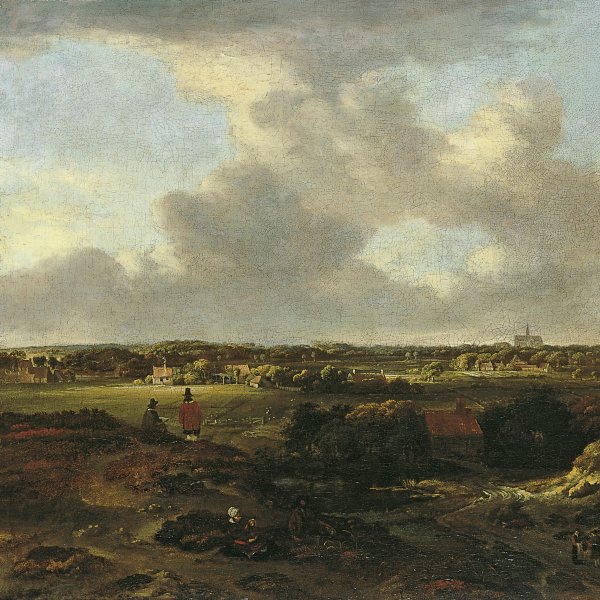Jan Vermeer van Haarlem II
Haarlem, 1628 -1691
Born in Haarlem in 1628, Jan Vermeer van Haarlem II was a member of a family of artists: his father, Jan Vermeer I, was an art dealer and his brother Isaac and his nephews Jan and Barent were landscape painters. The name “Van Haarlem” was added to their surname to distinguish them from the Vermeer family of Delft. Jan Vermeer II trained for ten years in the studio of the Haarlem painter Jacob de Wet but did not absorb the notable influence of Rembrandt evident in his master’s style. In 1654 he entered the painters’ guild and married the same year. Jan Vermeer van Haarlem II was influenced by the landscape painters of Haarlem, particularly Jacob van Ruisdael. He painted extensive views with a high viewpoint, generally of the dunes at Overveen on the outskirts of the city. His compositions are characterised by the use of an area of dune in shadow in the foreground, from which opens out another area of dark zones that alternate with other, brighter ones illuminated by small patches of clear sky among the clouds. These works are notably comparable to those of Adriaen Verboom, Jan van Kessel and Salomon Rombouts, who were also followers of Ruisdael. A second phase in the artist’s work focuses on large, panoramic views that are clearly influenced by Philips Koninck, and Vermeer van Haarlem’s paintings of this period make use of predominantly yellow and dark green tones.
On various occasions the artist worked with Adriaen van Ostade who painted the figures in his compositions. Jan Vermeer van Haarlem II also painted marine views, battles and pastoral scenes, while his son and pupil, Jan Vermeer van Haarlem III, continued to use his father’s motifs but deployed a more Italianate style.
On various occasions the artist worked with Adriaen van Ostade who painted the figures in his compositions. Jan Vermeer van Haarlem II also painted marine views, battles and pastoral scenes, while his son and pupil, Jan Vermeer van Haarlem III, continued to use his father’s motifs but deployed a more Italianate style.





